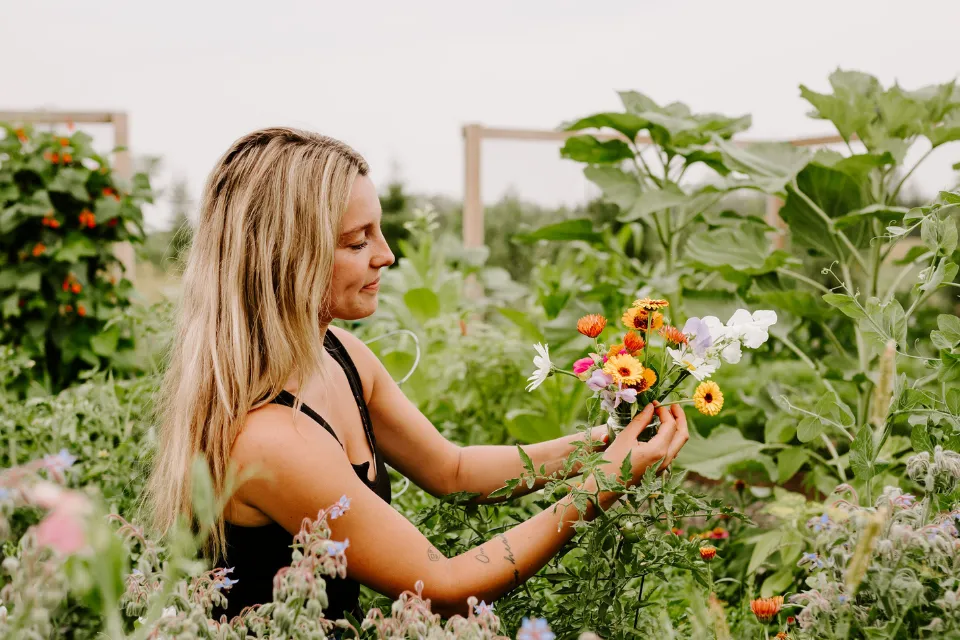From Soil to Petals Essential Steps for a Thriving Flower Garden
A flourishing flower garden is a joy to behold, bringing vibrant colors, soothing fragrances, and a touch of nature’s beauty to your outdoor space. However, creating a thriving garden takes more than just planting a few flowers. It requires careful planning, proper soil preparation, and ongoing maintenance. Whether you’re a beginner or an experienced gardener, this guide will take you through the essential steps to ensure your flower garden blossoms beautifully.
1. Choose the Right Location
The foundation of a successful flower garden starts with selecting the right spot. Most flowers thrive in areas with at least six hours of direct sunlight daily. Observe your yard throughout the day to determine where sunlight falls the longest. If your chosen location has more shade, opt for shade-loving plants like hostas, ferns, and impatiens.
Also, consider wind exposure and water drainage. Flowers planted in windy areas may require windbreaks, while those in poorly drained areas may need raised beds or improved soil conditions.
2. Prepare the Soil
Healthy soil is the key to a thriving garden. Before planting, test your soil to determine its pH level and nutrient content. Most flowering plants prefer slightly acidic to neutral soil (pH 6.0-7.0). You can adjust the soil accordingly by adding lime to reduce acidity or sulfur to lower alkalinity.
To improve soil structure, incorporate organic matter like compost, well-rotted manure, or peat moss. This enhances drainage, aeration, and nutrient retention, creating a fertile ground for plant roots to grow strong and deep.
3. Choose the Right Flowers
Selecting the right flowers for your climate and soil type is crucial. Consider the following factors when choosing plants:
- Annuals vs. Perennials: Annual flowers, such as petunias and marigolds, bloom for one season but provide vibrant colors. Perennials, like lilies and daisies, return year after year with minimal effort.
- Climate Adaptability: Choose plants suited to your local climate. Native flowers tend to thrive with less maintenance.
- Blooming Seasons: Select a mix of early, mid, and late-season bloomers to ensure year-round color.
For an economical way to start or expand your garden, consider purchasing bulk flower seeds, which allow you to plant large areas with beautiful, easy-to-grow flowers like zinnias, pansies, sunflowers, and coneflowers.
4. Plan Your Garden Layout
A well-designed flower garden is both aesthetically pleasing and functional. Arrange plants based on their height, color combinations, and bloom times. Taller flowers like hollyhocks and delphiniums should be placed at the back or center, while shorter ones like pansies and alyssum belong at the front.
Consider grouping flowers in odd-numbered clusters (threes, fives, or sevens) for a natural look. Also, leave enough spacing between plants to allow for proper air circulation and growth.
5. Plant with Care
Once you have your flowers and garden layout ready, it’s time to plant. Follow these steps for successful planting:
- Dig holes slightly larger than the plant’s root ball.
- Gently remove the plant from its container and loosen the roots.
- Place the plant in the hole at the same depth it was growing in its pot.
- Fill the hole with soil and press gently to remove air pockets.
- Water thoroughly to help the roots settle in.
For seeds, follow the packet instructions regarding depth and spacing.
6. Water Wisely
Watering is vital, but overwatering can lead to root rot. Most flowers require about an inch of water per week, either from rainfall or irrigation. Water in the early morning to allow moisture to soak in before the heat of the day.
Use mulch around plants to retain moisture, suppress weeds, and regulate soil temperature. Organic mulch, such as wood chips or straw, also enriches the soil as it decomposes.
7. Fertilize Regularly
To keep flowers blooming, provide them with the necessary nutrients. Use a balanced fertilizer (10-10-10) or one specifically designed for flowering plants. Organic options like compost tea or fish emulsion can also enhance plant health.
Apply fertilizer during the growing season, following package instructions to avoid over-fertilization, which can lead to excessive foliage at the expense of blooms.
8. Prune and Deadhead
Regular pruning and deadheading (removing spent flowers) encourage continuous blooming. Trim back leggy or overgrown plants to maintain their shape and improve airflow. Deadheading prevents plants from putting energy into seed production, redirecting it toward new blooms.
For perennials, cutting back old growth in the fall helps promote healthier regrowth in spring.
9. Protect Against Pests and Diseases
A thriving garden can attract unwanted pests like aphids, slugs, and caterpillars. Keep an eye out for signs of damage, such as holes in leaves or yellowing foliage. Use organic pest control methods like neem oil, insecticidal soap, or introducing beneficial insects like ladybugs.
Diseases such as powdery mildew and root rot can be prevented by proper spacing, well-drained soil, and avoiding overhead watering.
10. Enjoy and Maintain Your Garden
A flower garden is a living, evolving space that requires ongoing care. Take time to admire your blooms, cut fresh flowers for arrangements, and make adjustments as needed. Regularly weed, monitor for pests, and replace any struggling plants.
By following these essential steps, you’ll cultivate a vibrant and thriving flower garden that brings joy season after season. Happy gardening!







